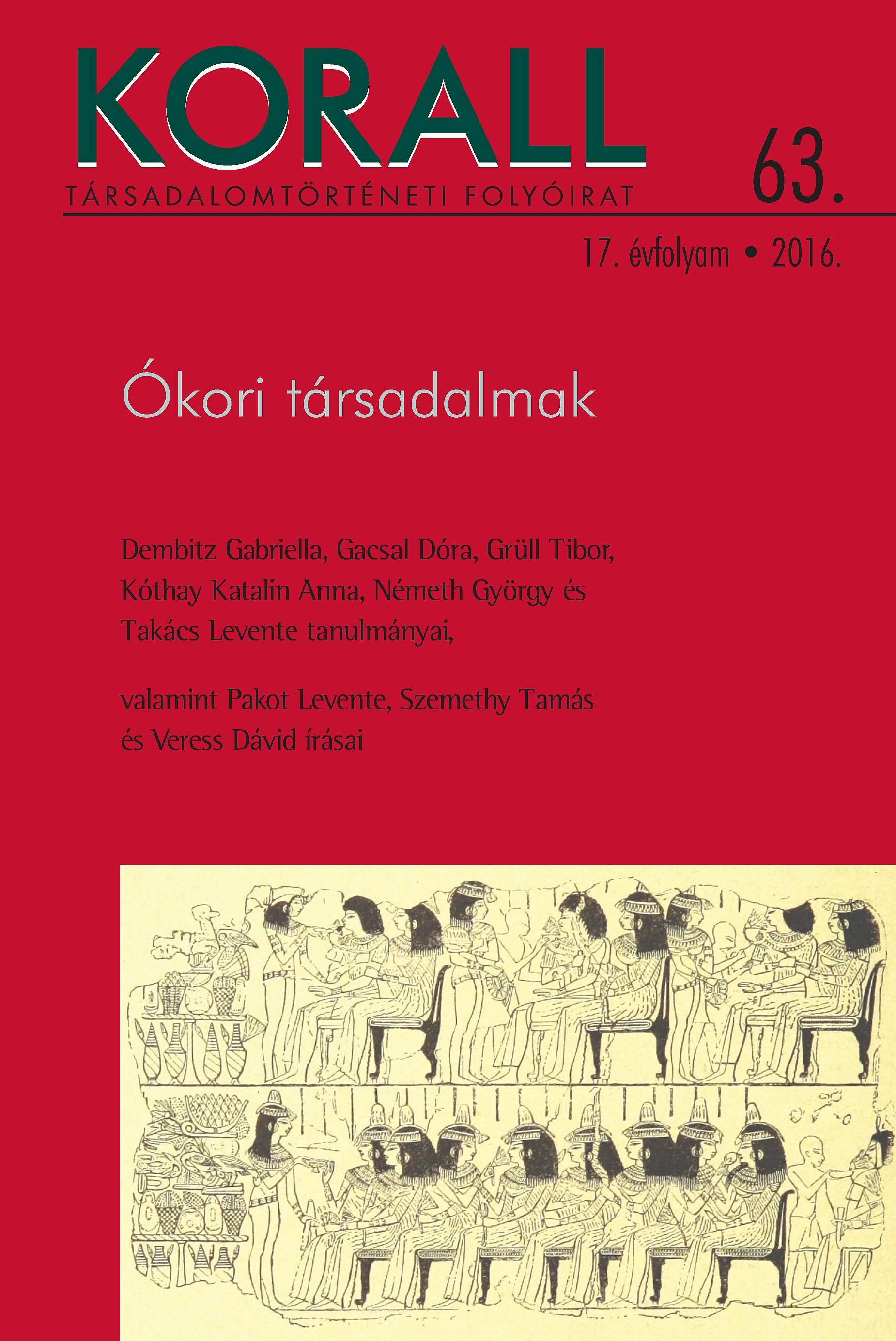Hereré, Nodzsmet és Henuttaui – az előkelő nők társadalmi szerepe az ókori Egyiptomban a késő Ramesszida kor és a XXI. dinasztia idején
Hereré, Nojmet and Henuttawi: The Social Roles of Elite Women in Ancient Egypt in the Late Ramesside Period and the Dynasty 21
Author(s): Gabriella DembitzSubject(s): Social history, Gender history, Ancient World
Published by: KORALL Társadalomtörténeti Egyesület
Keywords: Ancient Egyptian history; social history; women history; Third Intermediate Period;
Summary/Abstract: Following the death of Ramses XI, Manetho’s Aegyptiaca, the basis for modern periodisation, lists the kings of the New Dynasty, now known as the beginning of the Third Intermediate Period. This long period which lasted until 664 BC was far from homogeneous. It consisted of distinct phases including the initial phase of Dynasty 21, which was characterised by a fundamentally bipartite political situation. The period between Dynasty 21 and 25, also known as the Ethiopian period, ended with Peye’s succession in c. 722 BC. Due to the predominantly Lybian origin of the monarch and the ruling elite, this era may also be referred to as the Lybian period. Following Anthony Leahy and Karl Jansen-Winkeln, a new hypothesis has been gaining foothold in scholarship from 1985 onwards, which suggests that the changes on funerary rituals, new types of names and the increasing social role of women reflect the new Lybian elite’s influence on Egyptian society. The present study examines the purported societal differences between the Ramesside era and Dynasty 21 and the possible impact of the new Lybian military elite’s customs. Although the role and position of women in society is a hitherto neglected area of Egyptology, the lives and careers of Hereré, Nojmet and Henuttawi provide invaluable details for the interpretation of a little known period of Ancient Egyptian history.
Journal: Korall - Társadalomtörténeti folyóirat
- Issue Year: 2016
- Issue No: 63
- Page Range: 22-43
- Page Count: 22
- Language: Hungarian

